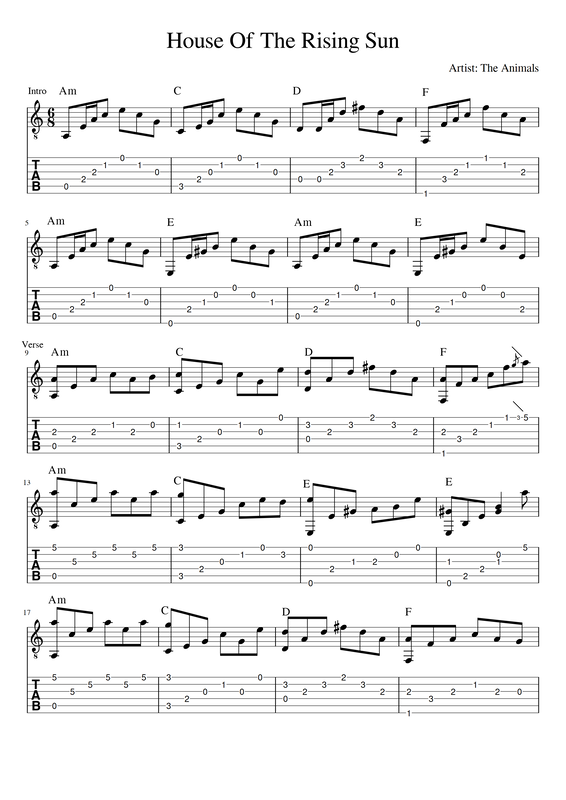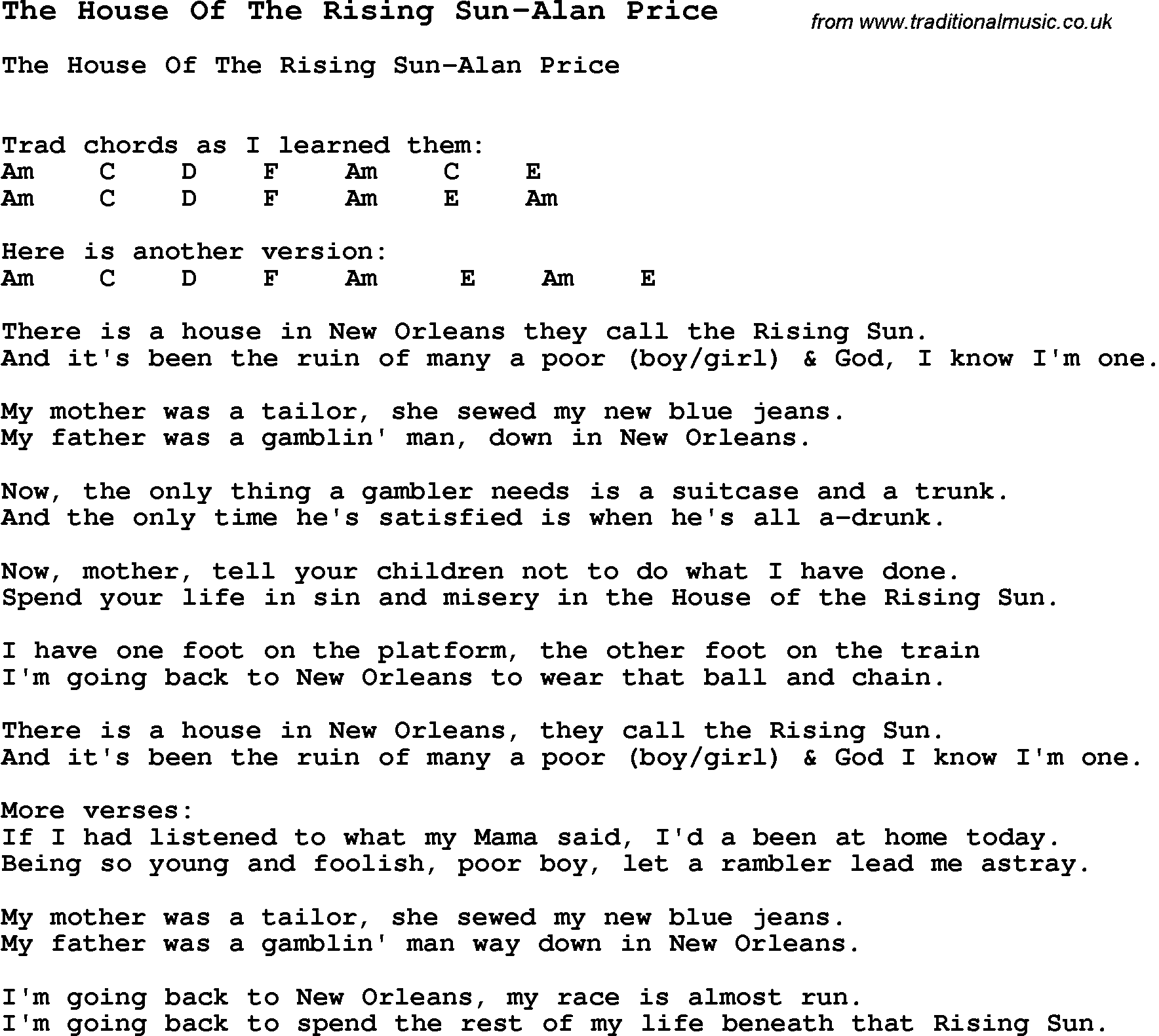Table Of Content

Play it at a tempo slow enough to allow you to pick these notes individually then increase the tempo as you get it up to speed. First, there was that iconic guitar arpeggio to start the song that every learning guitarist tried to play but couldn’t. Then there was a powerful organ solo in the middle that ‘Pricey’ dragged out of his shaking Vox Continental. However, it was the vocals that set the song apart, especially when Eric went up an octave. At the time, most Pop songs had something that set them apart.
5 Fascinating Facts About The Animals - American Songwriter
5 Fascinating Facts About The Animals.
Posted: Fri, 10 Nov 2023 08:00:00 GMT [source]
Behind the Album: Neil Young’s Polarizing ‘Trans’ and the Rift It Caused with His Record Label

In 2014, Five Finger Death Punch released a cover version for their album The Wrong Side of Heaven and the Righteous Side of Hell, Volume 2. Five Finger Death Punch's remake reached number 7 on the US Billboard Mainstream Rock chart. But in case you haven’t, we’ll start by saying he’s played out and toured almost every single year since 1962.
Charts
I put a different spin on it by altering the chords and using a bass line that descended in half steps—a common enough progression in jazz, but unusual among folksingers. By the early 1960s, the song had become one of my signature pieces, and I could hardly get off the stage without doing it. The single was the breakthrough hit for The Animals and charted worldwide.
Blues
A good hook, an interesting guitar solo, or plenty of vocals. But, they rarely had three different “high points.” This song did, which is one reason why “House of the Rising Sun” is so unique. The Animals were from the Northeast of England and were a well-known blues band even in London, 300 miles south. Their first single, “Baby Let Me Take You Home,” was an indication that they were going to be good. Released in 1964, it reached #21 in the UK and almost broke into the Top 100 in America. Producer Mickie Most was looking for a follow-up and wanted something different.
Baez claims she was gifted with a big beautiful voice and chose to use it to help fight for justice. She was a hit from the get, with her breakthrough debut album in 1960. I had learned it sometime in the 1950s, from a recording by Hally Wood, the Texas singer and collector, who had got it from an Alan Lomax field recording by a Kentucky woman named Georgia Turner.
of the Most Controversial RRHOF Inductees of All Time
He’s a visual artist, writer, and social activist with over 40 albums under his belt. In Bar 5, we return to the Am chord and play the same riff as Bar 1. In Bar 6 we go to the E chord, where again there’s another nuance in the picking pattern. For the E chord, you pick each note of the chord, which give us 6 notes across the fretboard. To keep in time, you play 16th notes for the notes on strings 5, 4, 3, and 2.
The version by the Animals, however, is by far the most popular, and Dylan is often annoyed when it is assumed that he covered that song from them. Frijid Pink released their cover of House of the Rising Sun in 1970. Recorded as an afterthought at the end of a session, their version became the surprise hit of their debut album. The song reached #7 on the Billboard Hot 100 charts that year. As recording albums became more accessible in the late 40s and 50s, dozens of covers emerged. Folk singer Dave Van Ronk’s remake was probably the most influential.
Sometimes the best things about a fairy tale are the mysteries of whether the tale is true. We like to leave House of the Rising Sun to keep wandering, as it always has. Famous ethnomusicologist Alan Lomax traces the House of the Rising Sun back to a ballad called Matty Groves. This would bring Rising Sun back to Northern England circa 1600. Here’s a little more history and our picks for the top five covers. Bars 7 and 8 are repeats of the Am and E chords in Bars 5 and 6.
Price performed the organ solo that was shaped after jazzman Jimmy Smith’s hit, “Walk On The Wild Side”, on a Vox Continental. Many believe that this points out to a brother in New Orleans, where the song was supposedly named after the occupant Madame Marianne LeSoleil Levant, which meant Rising Sun in French. Another popular theory goes that it was about a women’s prison in the city which had a gate that bore a rising sun motif (allegedly a reference to the “ball and chain” lyric in the song). “The House of the Rising Sun” was a traditional folk ballad about a person’s life going wrong in New Orleans, with different versions using various narratives with the same themes.
The meaning behind “House of the Rising Sun” by The Animals is one such song. He was nonetheless now a believer and declared it a single at its full length, saying "We're in a microgroove world now, we will release it". The performance takes off with Burdon's lead vocal, which has been variously described as "howling", "soulful", and as "...deep and gravelly as the north-east English coal town of Newcastle that spawned him". Everything was going fine and, "Hey, would it be okay for me to record your arrangement of 'House of the Rising Sun?'" he asked. Holman and White also collaborated on a 1950 release by Mercury Records.
He tempers his performance, starting off low and with deadly serious intent to grab your attention. When he soars up an octave, all the pain and anguish come pouring out. There is a house in New Orleans / They call the Rising Sun / And it’s been the ruin of many a poor boy / And God, I know I’m one, they sing in the chorus. The “ball and chain” may mean ‘prison’, but could also be a metaphor for addiction to gambling and booze. At the time, New Orleans businesses listed as coffee houses often also sold alcoholic beverages. There is a house in New Orleans, it's called the Rising SunIt's been the ruin of many poor girlGreat God, and I for one.

No comments:
Post a Comment